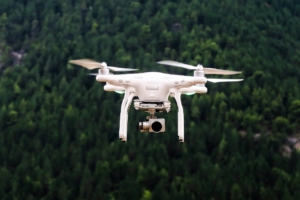Drones in China Aim to Fight Poverty
 China is a major industrial leader with a booming economy and population. However, upon closer examination, one finds that China has a rampant problem of poverty in its rural regions. Ironically, the areas most impacted are those that tout agricultural prowess. In fact, around five of China’s most impoverished counties are major cotton-producing areas. To help combat this, new and unconventional technologies are providing the solution to low agricultural yields and unsustainable farming practices. Meet drones — the latest in portable flying technology used to aid in the fight against poverty in rural China. Here are three ways that drones in China, and other networking and communication technologies, have taken root in impoverished Chinese communities.
China is a major industrial leader with a booming economy and population. However, upon closer examination, one finds that China has a rampant problem of poverty in its rural regions. Ironically, the areas most impacted are those that tout agricultural prowess. In fact, around five of China’s most impoverished counties are major cotton-producing areas. To help combat this, new and unconventional technologies are providing the solution to low agricultural yields and unsustainable farming practices. Meet drones — the latest in portable flying technology used to aid in the fight against poverty in rural China. Here are three ways that drones in China, and other networking and communication technologies, have taken root in impoverished Chinese communities.
3 Ways Drones in China Fight Poverty
- Drones and satellite imagery: Drones monitor the well-being of crops from the sky and assist in spraying chemicals and other supplements. Drones can also take photos of crop fields and relay these images back to farmers. The photos can determine the exact amount of soil, water and other resources needed for their agriculture to thrive. This practice is dubbed “precision agriculture.” With the help of technology, this technique is increasingly applied to crops like corn and soy in subsistence-based China. More than 55,000 agricultural drones are currently in use in China. The drones have sprayed pesticides over an estimated 30 million hectares of land, according to the director of the China Agrotech Extension Association.
- Boosting yield and incomes: In 2019, nearly 4,500 drones in the Chinese province of Xinjiang accomplished agricultural productivity for 65% of the cotton fields in the region. Although it may seem as though drones are taking jobs from the average working farmer, their subsequent introduction actually raised Xinjiang’s cotton output by 400,000 tons. An increase of $430 million in revenue is another result of the use of drones. Furthermore, one drone can do the work of 60 farmers in one hour and can spray pesticides 50 to 80 times faster than traditional farming. Thus, an efficient agricultural and harvesting environment is created. Drones essentially stimulate economic growth and support the rural working class in China by removing time and labor costs from the equation, helping farmers escape poverty.
- New networks: Drones are well-suited to the rugged farming environment in China. They can fly high above a grassy region or traverse difficult terrains often found within rural regions. These drones have easy adaptability and control through cell phones. This is especially useful for farmers who cannot entirely survey those areas individually. Additionally, farming data from drones enable farmers to access weather and disaster warnings, allowing them to prepare in advance. Those features inspired the government to conjure up a new idea: internet towers. China’s Ministry of Commerce employed a widespread plan to implement infrastructure for e-business in more than 80% of its villages to combat poverty. Farmers utilize so-called e-commerce service stations, with the help of these newly created networks and cable signals, to reach new markets to sell their products. In fact, online retail sales of agriculture have seen a significant yearly increase of 25.3%, with rural areas constituting a majority of this percentage.
The innovative and real-life applications of drones are virtually limitless and present a new way of combating global poverty. This Chinese experiment shows positive results and could soon become emblematic of drone-based agriculture on a much larger scale. In turn, this will help farmers that struggle with low agricultural yields and integrate farmers into an increasingly tech-based economic environment while lifting them out of poverty.
– Mihir Gokhale
Photo: Pixabay
